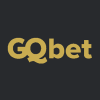Steven Gerrard’s Tactical Evolution at Aston Villa: A Comprehensive Analysis (2021-22)
Introduction: Gerrard’s Early Days and Strategic Context
When Aston Villa parted ways with Dean Smith following a sequence of five consecutive defeats, the timing of the decision raised eyebrows given the team’s recent stability and mid-table finish in 2020-21. The arrival of Steven Gerrard as head coach introduced not only a legendary playing pedigree but also a promising, modern approach to tactics despite his managerial inexperience at the Premier League level. Within his first ten matches, Gerrard secured four victories and a memorable draw against Manchester United, showcasing tactical resilience and adaptability. The winter additions of Lucas Digne and Philippe Coutinho further invigorated the squad, setting the stage for a tactical transformation. This analysis explores Gerrard’s system, player utilization, and core tactical principles guiding Villa during the 2021-22 campaign.
Formations and Player Roles: The Flexible 4-3-2-1 Approach
Under Gerrard, Aston Villa adopted a flexible approach rooted in a 4-3-3 base, often refining itself into a 4-3-2-1 – reminiscent of the classic “Christmas tree.” The attacking trident typically featured Ollie Watkins operating as a pseudo-wide forward, Emi Buendia providing creativity from the opposite flank, and Danny Ings or Watkins leading the line centrally. The front three’s interchangeability often sees Buendia drift inside and Ings or Watkins shifting wide, maximizing space and keeping defenses guessing.
As games progress, the system adapts further. Should Ings depart the field, Watkins typically assumes central striking duties—a move that has proven effective, considering Watkins’ comfort in central roles and the incomplete chemistry seen between him and Ings. The arrival of Coutinho presents even greater tactical flexibility, giving Gerrard options to alternate lineups and formations based on opponents and in-game scenarios.
Defensively, the core unit established under Dean Smith remained largely intact. Emiliano Martínez holds the position in goal, protected by Tyrone Mings and Ezri Konsa in central defense. The fullback positions have seen evolution, with Matt Targett making way for the attacking qualities of Lucas Digne on the left, and Matty Cash offering an outlet on the right. The midfield trio is anchored by Douglas Luiz, supplemented by the energetic Jacob Ramsey and either John McGinn or Morgan Sanson, providing both stability and drive through the center. Coutinho, while occasionally discussed as a potential deeper midfielder, is expected to play one of the advanced roles in Gerrard’s preferred attacking trio.
Structured Build-Up: Patterns and Progression from the Back
Aston Villa emphasize structured build-up play rooted in a 2+3 progression, where the center-backs hold a deep line and the three central midfielders manipulate space above them. Mings, Konsa, and Luiz often initiate possession, while Ramsey and McGinn advance toward the flanks or occupy spaces beside the center-backs to offer additional angles and escape routes.
This fluidity allows fullbacks to move aggressively upfield, driving opposition wingers into deep positions and widening play. Once possession reaches Digne or Cash, quick ball movement—usually no more than two touches—launches the next attacking phase. Jacob Ramsey excels here, utilizing his strength and dribbling ability to move the ball vertically from deeper positions.
Emi Buendia enhances the build-up with his tendency to drop into the midfield, facilitating numerical advantages and combining with central teammates to create diamond-like passing structures. On occasions, Gerrard’s defenders will bypass lines altogether using raking diagonal passes, with Buendia and the advanced forwards exploiting emerging spaces out wide.
Attack: Direct Transitions and Central Penetration
Aston Villa’s attacking identity under Gerrard is rooted in transition play, often favoring rapid counters over methodical possession. With the team rarely dominating the ball—outpossessing opponents in just two of the first ten games—Villa targets immediate forward passes upon regaining possession.
Ollie Watkins is the key reference point in these moments, consistently the most targeted player in forward passes by a significant margin. Whether tasked with latching onto through balls in behind or holding up play to bring support runners into the action, Watkins’ mobility is central to Villa’s strategy. Buendia supplements the attack by finding pockets between the lines, frequently threading incisive passes to onrushing teammates or drawing fouls to relieve pressure.
Both Ramsey and McGinn contribute vertical runs and quick dribbling to destabilize defenses, enabling Villa to move quickly from defense to attack. While Matt Targett and Matty Cash provide width, surprisingly, Villa’s play favors central routes—a reflection of their counter-attacking DNA and dynamism through the spine.
During extended spells of possession, especially in the final third, Villa can form a 2-3-5 structure, with fullbacks pushing high and midfielders—particularly Ramsey and Buendia—joining or supporting the attackers. In these moments, Douglas Luiz’s positional discipline becomes critical for coverage against opposition counters, while the advanced lines attempt to overwhelm with numbers and movement.
Defensive Structure: Compactness and Risks
Without the ball, Villa maintain the familiar 4-3-2-1 defensive shape. This formation brings discipline and compactness, especially between the back four and midfield—though the front line retains less rigidity, poised to spark transitions when the opportunity arises.
In the mid and low blocks, central midfielders are responsible for tracking wide opposition threats, with Villa’s fullbacks only engaging at deeper levels of the pitch. This means that, although Villa limit central progression, they can sometimes be exposed in wide areas, especially if the workload demands on the wider central midfielders become unsustainable.
Gerrard’s team typically avoids high-intensity pressing for long spells, instead choosing to drop off after turnovers and prioritize position over counter-pressing. This energy management offsets pressing intensity but places increased responsibility on the midfield and fullbacks to cover ground, especially late in games.
During matches against top-tier opposition, Villa have demonstrated an ability to execute tailored defensive assignments—like double marking creative threats (e.g., Chelsea’s Mason Mount with coordinated efforts from Targett, Mings, and Ramsey). However, the team’s defensive statistics under Gerrard, including 13 goals conceded and just two clean sheets in ten outings, suggest further refinement is needed to consistently achieve top-half solidity.
Coutinho’s Impact and Villa’s Trajectory
The January introduction of Philippe Coutinho promises to address longstanding creative gaps between midfield and attack. His intelligence both on and off the ball, coupled with an emerging partnership with Jacob Ramsey and the vision of Buendia, could dramatically elevate Villa’s attacking threat and consistency in the final third.
By integrating Coutinho into the advanced attacking roles, Villa now possess a blend of technical ingenuity and transitional pace capable of breaking down varied defensive schemes. For Gerrard, these tools offer the potential to blend counter attacking with meaningful control in possession, increasing Villa’s tactical flexibility as the campaign unfolds.
Conclusion: Early Promise and Areas for Growth
Steven Gerrard’s initial weeks at the helm have introduced both optimism and learning curves for Aston Villa. The team’s tactical evolution displays clear hallmarks of modern management—flexible formations, aggressive transitions, and a strong defensive foundation. The addition of Coutinho and other January signings further expands the club’s options going forward.
While the current system occasionally exposes vulnerabilities—particularly in wide areas and during defensive transitions—the overall direction is positive, with a squad growing in tactical awareness and adaptability. As connectivity between the lines improves and new signings settle, Aston Villa appear well positioned to challenge for higher Premier League finishes and threaten more established teams under Gerrard’s guidance.









